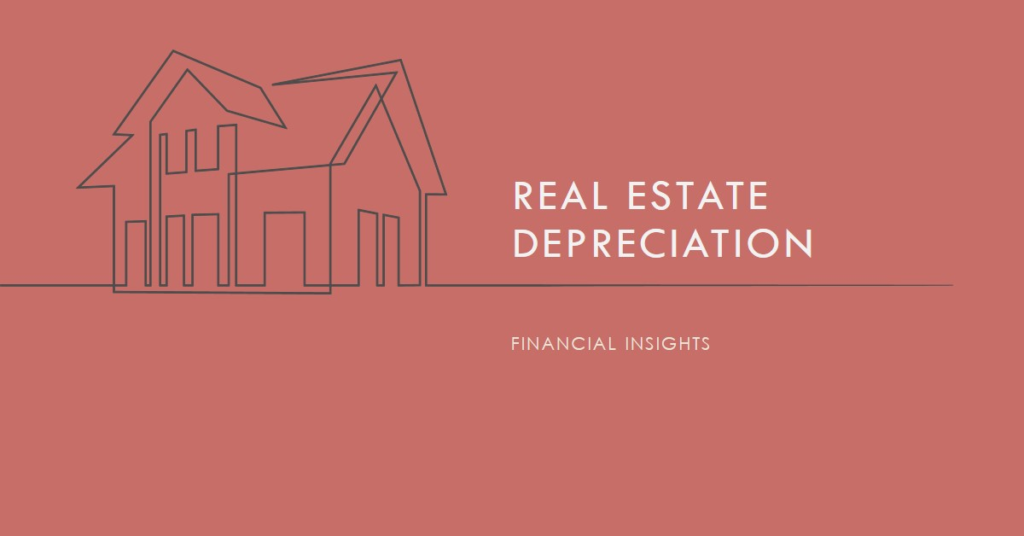
Table of Contents
- Introduction:
- Defining Depreciation Depreciation:
- Types of Depreciation:
- Understanding Straight-Line Depreciation:
- Challenges of Depreciation Calculation:
- Tax Implications of Depreciation:
- Strategies to Mitigate Depreciation:
- Impact on Property Valuation:
- Long-Term Investment Considerations:
- Conclusion:
Introduction:
Real estate investment stands as one of the most lucrative avenues for wealth accumulation. However, amid the glitz and glamour of property ownership lies a crucial financial concept: depreciation. Understanding real estate depreciation is paramount for investors seeking to maximize returns and navigate tax implications effectively. In this comprehensive guide, we delve into the intricacies of real estate depreciation, shedding light on its financial insights and implications.
Defining Depreciation Depreciation:
in the context of real estate, refers to the gradual decrease in the value of a property over time. This reduction in value is primarily attributed to wear and tear, obsolescence, and other factors affecting the property’s usefulness. Unlike other assets, real estate experiences depreciation despite potentially appreciating in market value, making it a unique aspect of property investment.
Types of Depreciation:
To grasp the full spectrum of real estate depreciation, it’s essential to recognize the three primary types: physical, functional, and economic depreciation. Physical depreciation encompasses the natural wear and tear of a property’s physical structure and components, such as roofing, plumbing, and flooring. Functional depreciation arises from flaws or inadequacies in the property’s design or layout, impacting its overall utility. Economic depreciation, on the other hand, stems from external factors beyond the property itself, such as changes in market demand or neighborhood deterioration.
Understanding Straight-Line Depreciation:
Straight-line depreciation stands as the most common method used to calculate real estate depreciation for tax purposes. Under this method, the property’s cost, minus its estimated salvage value, is divided by its useful life to determine the annual depreciation expense. While straightforward, this method assumes an equal decrease in value over the property’s lifespan, overlooking factors like accelerated wear in certain components or market fluctuations impacting property value.
Challenges of Depreciation Calculation:
Despite its importance, calculating depreciation can pose challenges for real estate investors. Determining the property’s useful life, salvage value, and accurately assessing depreciation rates requires careful consideration and often necessitates professional expertise. Additionally, the ever-changing nature of real estate markets introduces complexities that can complicate depreciation calculations further.
Tax Implications of Depreciation:
Real estate depreciation plays a pivotal role in tax planning and management for property investors. By deducting depreciation expenses from rental income, investors can reduce their taxable income, thereby lowering their overall tax liability. However, it’s crucial to adhere to IRS guidelines and depreciation schedules to avoid potential audit triggers or legal repercussions.


Strategies to Mitigate Depreciation:
While depreciation is inevitable in real estate investment, savvy investors employ various strategies to mitigate its financial impact. Regular maintenance and upgrades can prolong the property’s useful life, thereby slowing depreciation rates. Additionally, exploring alternative depreciation methods, such as accelerated depreciation or cost segregation, can yield tax advantages and enhance cash flow.
Impact on Property Valuation:
Real estate depreciation directly influences property valuation, affecting its marketability and investment potential. Properties with higher depreciation rates may experience lower appraisals and reduced resale value, potentially deterring prospective buyers or investors. Conversely, properties with well-maintained structures and minimal depreciation stand to command higher prices and attract a broader pool of interested parties.
Long-Term Investment Considerations:
In the realm of real estate investment, taking a long-term perspective is essential for maximizing returns and weathering market fluctuations. While depreciation may exert short-term financial pressures, adopting a strategic approach to property management and investment can yield significant benefits over time. By focusing on value-added initiatives, such as renovations, property enhancements, and adaptive reuse, investors can offset depreciation and enhance the property’s overall appeal and profitability.
Conclusion:
In the dynamic landscape of real estate investment, understanding the nuances of depreciation is paramount for financial success. By recognizing the various forms of depreciation, implementing proactive strategies, and adhering to tax regulations, investors can navigate the complexities of property ownership with confidence. Ultimately, embracing depreciation as an inherent aspect of real estate investment empowers investors to make informed decisions and unlock the full potential of their property portfolios.


